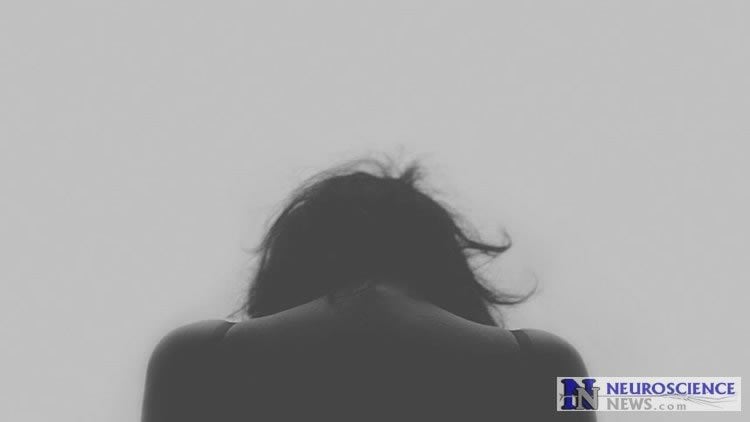Summary: Researchers report 1 in 5 people are at risk of experiencing mental health conditions, such as PTSD or major depressive disorder, within 6 months of suffering mTBI.
Source: NIH/NINDS.
A new study reveals that approximately 1 in 5 individuals may experience mental health symptoms up to six months after mild traumatic brain injury (mTBI), suggesting the importance of follow-up care for these patients. Scientists also identified factors that may increase the risk of developing post-traumatic stress disorder (PTSD) and/or major depressive disorder following mild mTBI or concussion through analysis of the Transforming Research and Clinical Knowledge in Traumatic Brain Injury (TRACK-TBI) study cohort. The study was supported by the National Institute of Neurological Disorders and Stroke (NINDS), part of the National Institutes of Health. The findings were published in JAMA Psychiatry.
“Mental health disorders after concussion have been studied primarily in military populations, and not much is known about these outcomes in civilians,” said Patrick Bellgowan, Ph.D., NINDS program director. “These results may help guide follow-up care and suggest that doctors may need to pay particular attention to the mental state of patients many months after injury.”
In the study, Murray B. Stein, M.D., M.P.H., professor at the University of California San Diego, and his colleagues investigated mental health outcomes in 1,155 people who had experienced a mild TBI and were treated in the emergency department. At three, six, and 12 months after injury, study participants completed various questionnaires related to PTSD and major depressive disorder. For a comparison group, the researchers also surveyed individuals who had experienced orthopedic traumatic injuries, such as broken legs, but did not have head injury.
The results showed that at three and six months following injury, people who had experienced mTBI were more likely than orthopedic trauma patients to report symptoms of PTSD and/or major depressive disorder. For example, three months after injury, 20 percent of mTBI patients reported mental health symptoms compared to 8.7 percent of orthopedic trauma patients. At six months after injury, mental health symptoms were reported by 21.2 percent of people who had experienced head injury and 12.1 percent of orthopedic trauma patients.
Dr. Stein and his team also used the data to determine risk factors for PTSD and major depressive disorder after mTBI. The findings revealed that lower levels of education, self-identifying as African-American, and having a history of mental illness increased risk. In addition, if the head injury was caused by an assault or other violent attack, that increased the risk of developing PTSD, but not major depressive disorder. However, risk of mental health symptoms was not associated with other injury-related occurrences such as duration of loss of consciousness or posttraumatic amnesia.
“Contrary to common assumptions, mild head injuries can cause long-term effects. These findings suggest that follow-up care after head injury, even for mild cases, is crucial, especially for patients showing risk factors for PTSD or depression,” said Dr. Stein.
This study is part of the NIH-funded TRACK-TBI initiative, which is a large, long-term study of patients treated in the emergency department for mTBI. The goal of the study is to improve understanding of the effects of concussions by establishing a comprehensive database of clinical measures including brain images, blood samples, and outcome data for 3,000 individuals, which may help identify biomarkers of TBI, risk factors for various outcomes, and improve our ability to identify and prevent adverse outcomes of head injury. To date, more than 2,700 individuals have enrolled in TRACK-TBI.

A recent study coming out of TRACK-TBI suggested that many TBI patients were not receiving recommended follow-up care.
“TRACK-TBI is overturning many of our long-held beliefs around mTBI, particularly in what happens with patients after they leave the emergency department. We are seeing more evidence about the need to monitor these individuals for many months after their injury to help them achieve the best recovery possible,” said Geoff Manley, M.D., professor at the University of California San Francisco, senior author of the current study and principal investigator of TRACK-TBI.
Future research studies will help identify mental health conditions, other than PTSD and major depressive disorder, that may arise following mTBI. In addition, more research is needed to understand the biological mechanisms that lead from mTBI to mental health problems and other adverse outcomes, such as neurological and cognitive difficulties.
Funding: This work was supported by the NINDS (NS086090) and the Department of Defense (W81XWH-14-2-0176).
Source: Barbara McMakin – NIH/NINDS
Publisher: Organized by NeuroscienceNews.com.
Image Source: NeuroscienceNews.com image is in the public domain.
Original Research: Abstract for “Risk of Posttraumatic Stress Disorder and Major Depression in Civilian Patients After Mild Traumatic Brain Injury: A TRACK-TBI Study” by Murray B. Stein, MD, MPH; Sonia Jain, PhD; Joseph T. Giacino, PhD; Harvey Levin, PhD; Sureyya Dikmen, PhD; Lindsay D. Nelson, PhD; Mary J. Vassar, RN, MS; David O. Okonkwo, MD, PhD; Ramon Diaz-Arrastia, MD, PhD; Claudia S. Robertson, MD; Pratik Mukherjee, MD, PhD; Michael McCrea, PhD; Christine L. Mac Donald, PhD; John K. Yue, MD; Esther Yuh, MD, PhD; Xiaoying Sun, MS; Laura Campbell-Sills, PhD; Nancy Temkin, PhD; Geoffrey T. Manley, MD, PhD; and the TRACK-TBI Investigators in JAMA Psychiatry. Published January 30 2019.
doi:10.1001/jamapsychiatry.2018.4288
[cbtabs][cbtab title=”MLA”]NIH/NINDS”Mental Health Disorders Common Following Mild Head Injury.” NeuroscienceNews. NeuroscienceNews, 30 January 2019.
<https://neurosciencenews.com/mtbi-mental-health-10663/>.[/cbtab][cbtab title=”APA”]NIH/NINDS(2019, January 30). Mental Health Disorders Common Following Mild Head Injury. NeuroscienceNews. Retrieved January 30, 2019 from https://neurosciencenews.com/mtbi-mental-health-10663/[/cbtab][cbtab title=”Chicago”]NIH/NINDS”Mental Health Disorders Common Following Mild Head Injury.” https://neurosciencenews.com/mtbi-mental-health-10663/ (accessed January 30, 2019).[/cbtab][/cbtabs]
Abstract
Risk of Posttraumatic Stress Disorder and Major Depression in Civilian Patients After Mild Traumatic Brain Injury: A TRACK-TBI Study
Importance
Traumatic brain injury (TBI) has been associated with adverse mental health outcomes, such as posttraumatic stress disorder (PTSD) and major depressive disorder (MDD), but little is known about factors that modify risk for these psychiatric sequelae, particularly in the civilian sector.
Objective
To ascertain prevalence of and risk factors for PTSD and MDD among patients evaluated in the emergency department for mild TBI (mTBI).
Design, Setting, and Participants
Prospective longitudinal cohort study (February 2014 to May 2018). Posttraumatic stress disorder and MDD symptoms were assessed using the PTSD Checklist for DSM-5 and the Patient Health Questionnaire-9 Item. Risk factors evaluated included preinjury and injury characteristics. Propensity score weights-adjusted multivariable logistic regression models were performed to assess associations with PTSD and MDD. A total of 1155 patients with mTBI (Glasgow Coma Scale score, 13-15) and 230 patients with nonhead orthopedic trauma injuries 17 years and older seen in 11 US hospitals with level 1 trauma centers were included in this study.
Main Outcomes and Measures
Probable PTSD (PTSD Checklist for DSM-5 score, ≥33) and MDD (Patient Health Questionnaire-9 Item score, ≥15) at 3, 6, and 12 months postinjury.
Results
Participants were 1155 patients (752 men [65.1%]; mean [SD] age, 40.5 [17.2] years) with mTBI and 230 patients (155 men [67.4%]; mean [SD] age, 40.4 [15.6] years) with nonhead orthopedic trauma injuries. Weights-adjusted prevalence of PTSD and/or MDD in the mTBI vs orthopedic trauma comparison groups at 3 months was 20.0% (SE, 1.4%) vs 8.7% (SE, 2.2%) (P < .001) and at 6 months was 21.2% (SE, 1.5%) vs 12.1% (SE, 3.2%) (P = .03). Risk factors for probable PTSD at 6 months after mTBI included less education (adjusted odds ratio, 0.89; 95% CI, 0.82-0.97 per year), being black (adjusted odds ratio, 5.11; 95% CI, 2.89-9.05), self-reported psychiatric history (adjusted odds ratio, 3.57; 95% CI, 2.09-6.09), and injury resulting from assault or other violence (adjusted odds ratio, 3.43; 95% CI, 1.56-7.54). Risk factors for probable MDD after mTBI were similar with the exception that cause of injury was not associated with increased risk.
Conclusions and Relevance
After mTBI, some individuals, on the basis of education, race/ethnicity, history of mental health problems, and cause of injury were at substantially increased risk of PTSD and/or MDD. These findings should influence recognition of at-risk individuals and inform efforts at surveillance, follow-up, and intervention.






